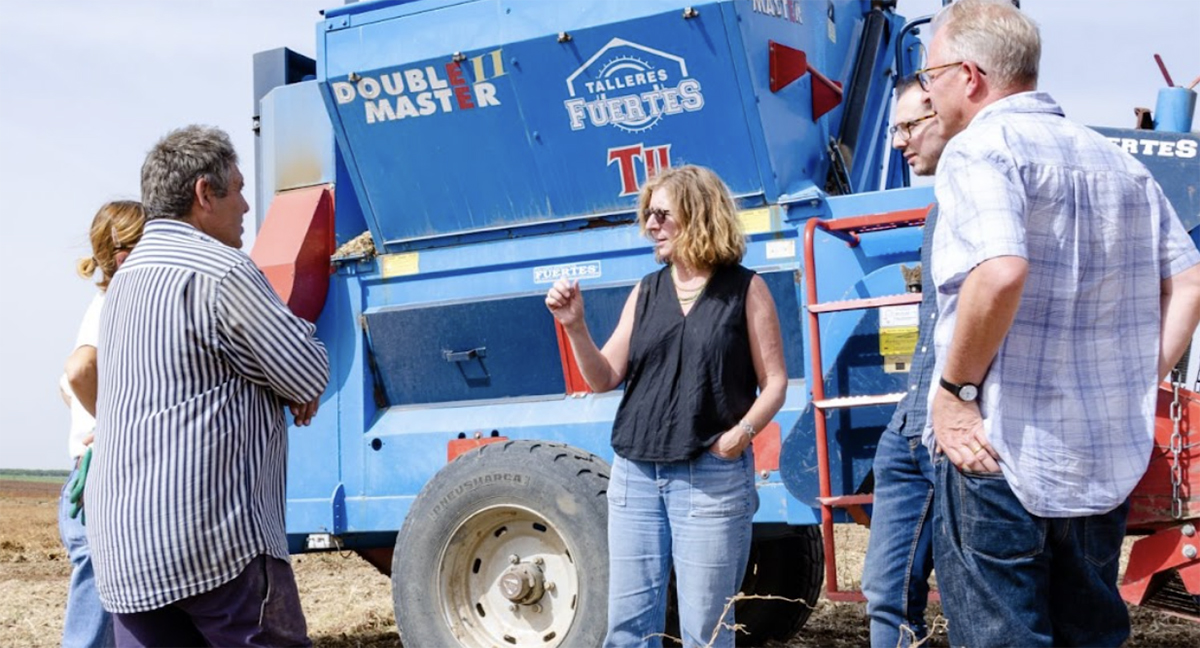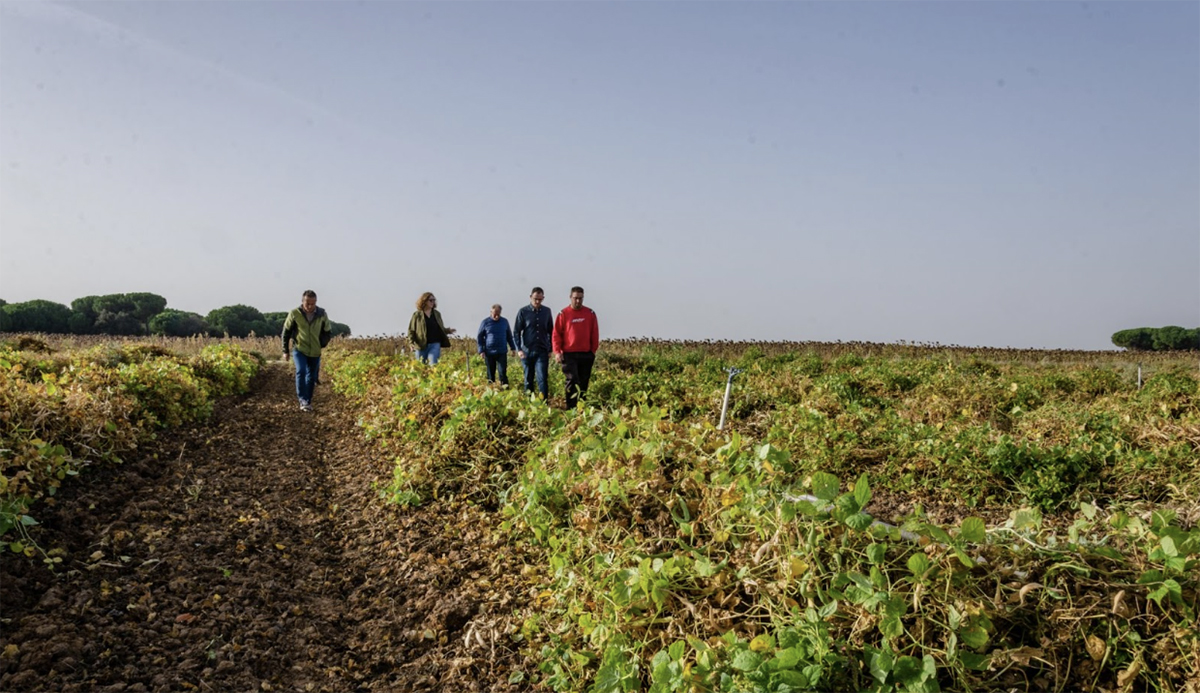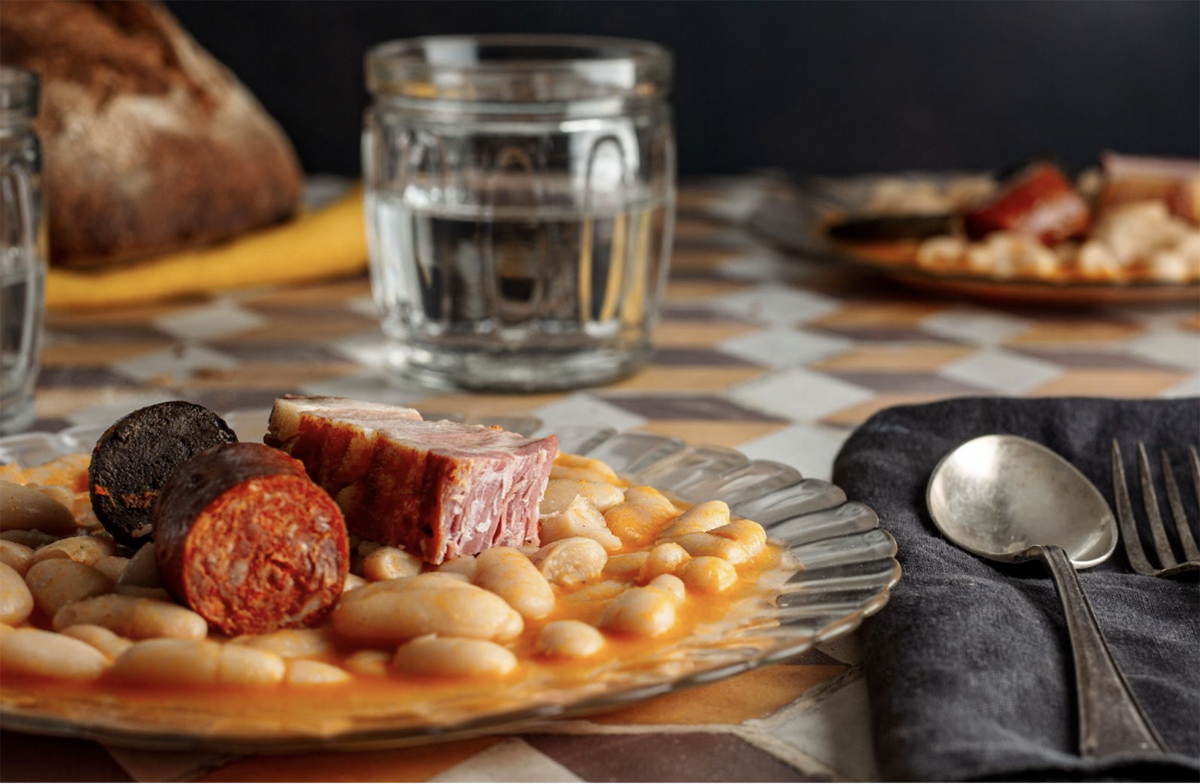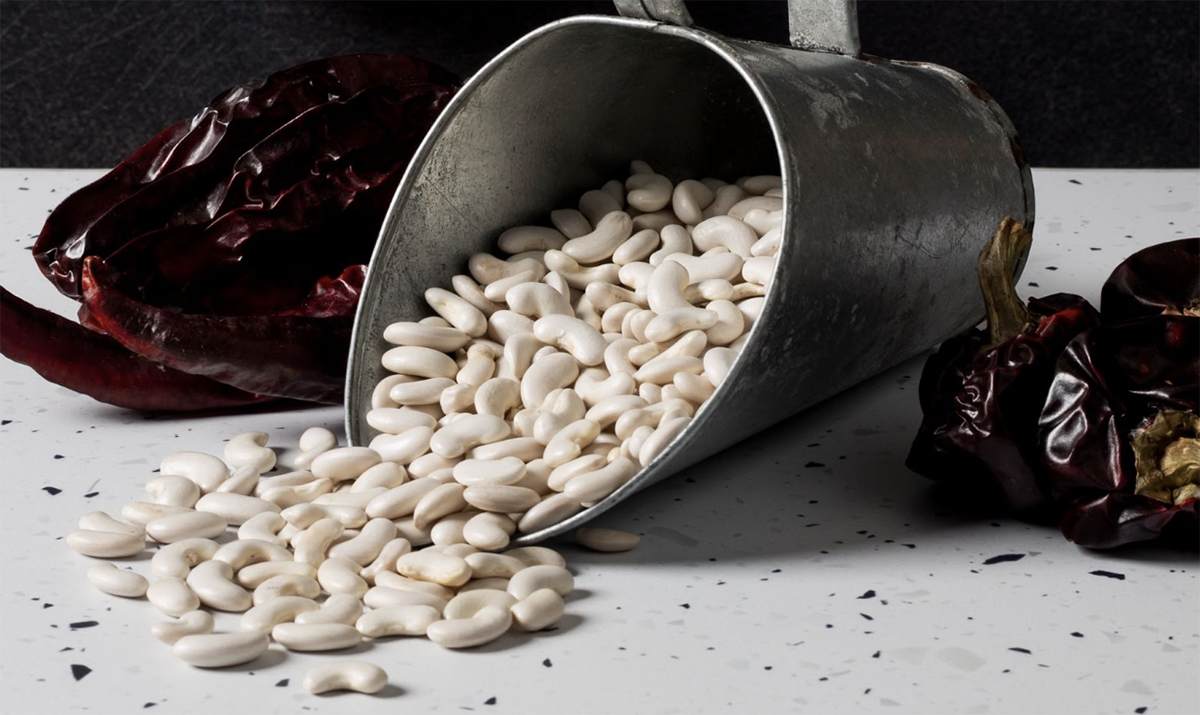January 26, 2023
Monika Linton of Brindisa talked with Luke Wilkinson about the unique benefits of heirloom pulses, the importance of terroir, and why she prefers Butifarra and Ganxet to British bangers and beans…


Pulses are increasingly appreciated culinary protagonists in their own right and not just for their ability to absorb rich and complex flavors. For many in the culinary world, the particular attributes of high-quality heirloom pulses bring them into the arena of premium product — comparable to the finest Greek olives, beluga caviar, or melt-in-the-mouth jamón ibérico.
Spain is the home of many of the world's most sought-after legumes, boasting more geographically protected pulses than any other country in the world. But they are just one part of the rich tapestry of Spanish cuisine – an array of much-loved produce is grown under the invigorating Iberian sun.
Brindisa is a popular London-based chain of delicatessens that set about bottling up this unique food culture and bringing it to the UK. Brindisa has three delicatessens and five restaurants dotted around central London. It has become the home of Spanish food in the capital, with pulses central to their offering.

Monika Linton talking pulses in the fields
The brand’s founder, Monika Linton, has a lot to say about the rise of pulses as luxury food and the potential they have to be better understood and, consequently, better appreciated, in the public consciousness, as well to solidify their position as a fixture of the modern culinary world.
Many people wouldn’t realize that pulses can have, as with all raw materials, a unique terroir, and that they can be selected for purity and quality. On the whole, large industries use pulses from multiple varieties, batches, and origins to create affordable foods on an industrial scale. This has its merits, of course, but it does not celebrate the pulse itself and essentially doesn’t teach the consumer the choices they have.
A high-caliber heirloom pulse will have its own distinct flavor, be creamy with a silky skin, and have good absorption ability for flavorful stocks and fats. It will have a higher content of vitamins and minerals from good soils and will be perfect in form throughout the pack. I would equate it to luxury rice varieties – you can find carnaroli or basmati rice of varying price, origin and quality.
“Many people wouldn’t realize that pulses can have, as with all raw materials, a unique terroir, and that they can be selected for purity and quality.”
In addition, products from smallholders rather than monoculture production help maintain diversity and rural employment. Smallholders also practice rotation very diligently, and when cultivated on a small scale the pulse plants reinvigorate the soil by fixing nitrogen.
We are now seeing the three roots of eating pulses all meeting to create growth in interest and consumption: dishes from the subcontinent and eastern Mediterranean that are traditionally vegetarian and where lentils and peas originate (through a combination of religion and poverty); the popularity of American bean dishes (the Americas being the original bean continent) and the ‘hippie’ culture of eating pulses has become mainstream (vegetarians & vegans).
There is a rise in demand for pulses and this is reflected mostly in the greater availability of better quality jarred pulses. These cost twice as much as a tin but the experience of using them is far better as the product is better selected, often using more consistent raw material. The glass jar means processing is kinder on the pulses, allowing them to better retain shape and texture.

Monika on the hunt for beans in Spain
We’ve listed dry pulses at Brindisa since 1990. Historically they have mainly been bought by chefs, who have the opportunity to plan and slow cook. Chefs buy them for their exceptional quality and the opportunity the pulses give them to flavor food to their specifications. Pre-cooked beans will not absorb aromatics and flavor in the same way as dry pulses cooked from scratch.
Dry pulses and heirloom varieties are in demand, and some of us, especially me, would only ever cook from scratch - it may appear more expensive but good pulses usually double in weight when cooked so consumers need to consider this when they buy them. As high-quality pulses also absorb flavor well, you don't need to add lots of other ingredients to make your dish interesting.
As high-quality pulses also absorb flavor well, you don't need to add lots of other ingredients to make your dish interesting.
At Brindisa I feel we get a good cross-section of omnivores and vegetarians. Heirloom or even standard pulses are a foundation stone to much of Spain's cuisine. These dishes are rich in meat or fish on the whole; chorizos, pancettas and black pudding are outstanding with luxury pulses, as the bean absorbs the fats and flavor, making for a silky stock.
The meats are not expensive so you can spend money on the right bean. Given that the bean carries the flavor, you don't need to overload the dish with lots of meat – it's real fuel for winter eating! There are no traditional bean dishes from Spain that are vegetarian as, even if they have no visible meat, the stock will be meat or chicken. Equally, fish and shellfish are great favorites with certain beans and if you make an excellent fish stock you only need a few clams on show.
The consumption of pulses for vegetarian and vegan cooking is always growing and is ideal for many people nowadays but, on the whole, these types of diets were not looking for heirloom varieties until recently.

Traditional Spanish Fabada
Pulses are a clear favorite in our home for a number of reasons: they are a slow-release food that gives you energy for longer and they have no gluten. We enjoy our bread but like to reduce our gluten intake, so pulses help. We have a vegetarian and a pescatarian in the family and we find pulses provide us with diversity, flexibility and interest for our meals. We cook them so often that we have no issue with pre-soaking or planning the time to cook them.
I have three approaches: I will use jarred beans if I'm in a huge hurry and the dish does not warrant the extra prep, I’ll also cook plain dry pulses regularly so that we always have a stash ready to use for salads, humus, casseroles, gratinees and then finally, once a fortnight I make a special effort to cook an exceptional dish with fresh shell fish or meats, if I have the audience.
“I’m certain that with the help of chefs with a public face who can demonstrate the simplicity of cooking pulses, the niche will grow.”
I do plan to continue searching out local growers of heirloom beans in Spain; we have a hardcore following for dry pulses and, as we build our range and credentials further in this category, - which is one of my favorites - we will be more able to buy in small batches of rare legumes and get them to enthusiasts in the UK.
I’m certain that with the help of chefs with a public face who can demonstrate the simplicity of cooking pulses, the niche will grow, although due to their limited cultivation and their terroirs, heirloom beans cannot not become mainstream.
One of the earliest triggers for this curiosity around beans was when I lived in Catalonia. I found the Catalans eat sausages and beans all the time - just as we do in England -, but this was a cut above. Rather than tinned beans in tomato sauce with an English ‘banger’ (sausage), it was freshly cooked ‘ganxet’ beans (hooked white beans grown in the terroir of El Valles) of the most delicate texture, freshly cooked then refried with garlic, parsley and lardons to eat alongside a grilled Catalan butifarra, which resembles a Toulouse sausage.

‘Ganxet’ beans from Catalonia
It is also worth noting that, as I traveled more in Spain, the one dish that knocked me sideways was the Cantabrian dish of white beans with spider crab. I’ve eaten many dishes with poached and semi-cured meats that are very typical of Northern Spain but I must say that shellfish cooked with the Asturian flageolet beans called ‘Verdina’ or, as in my book, spider crab with fabas (long white beans) is something out of this world. The combination of the sustaining nature of beans with the lighter flavor of fish is a dream come true.
Disclaimer: The opinions or views expressed in this publication are those of the authors or quoted persons. They do not purport to reflect the opinions or views of the Global Pulse Confederation or its members.